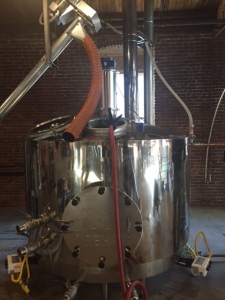Efficient Mashing Procedures
09 November 2015
Efficient cooking and mashing is all about temperature management. In this iStill Blog post I will tell you how you can do it in an energy efficient and quick way. First, by diving into how mashing is normally done, then by introducing new procedures that will get you there faster and at lower costs.
The old way
Okay, envision you are going to mash 2000 liters of corn whiskey or Bourbon beer. Let's assume you will use 400 kilo's of grains and 1600 liters of water, and you aim for a distillers beer that will reach 8% after fermentation. There is 300 kilo's of corn and 100 kilo's of malted barley in this example.
The old cooking and mashing procedure would look something like this (simplified):
- Bring 1600 liters of water to a boil;
- Add the corn and cook it for some time;
- Cool the mash to under 70 degrees Centigrade and add the malted barley;
- Maintain a starch to sugar conversion temperature of 60 to 62 degrees C;
- Cool to 20 C and start fermentation.
- We now bring 800 liters of water to a boil;
- We add the corn and cook it for some time;
- Next, we cool the mash to under 70 degrees Centigrade by adding 400 liters of cold water and then add the malted barley;
- We now maintain a starch to sugar conversion temperature of 60 to 62 degrees C;
- And then cool to 20 C using the remaining 400 liters of water and start fermentation.
www.iStill.eu
Reactions
Add your comment
All reactions ()
Loading comments..
